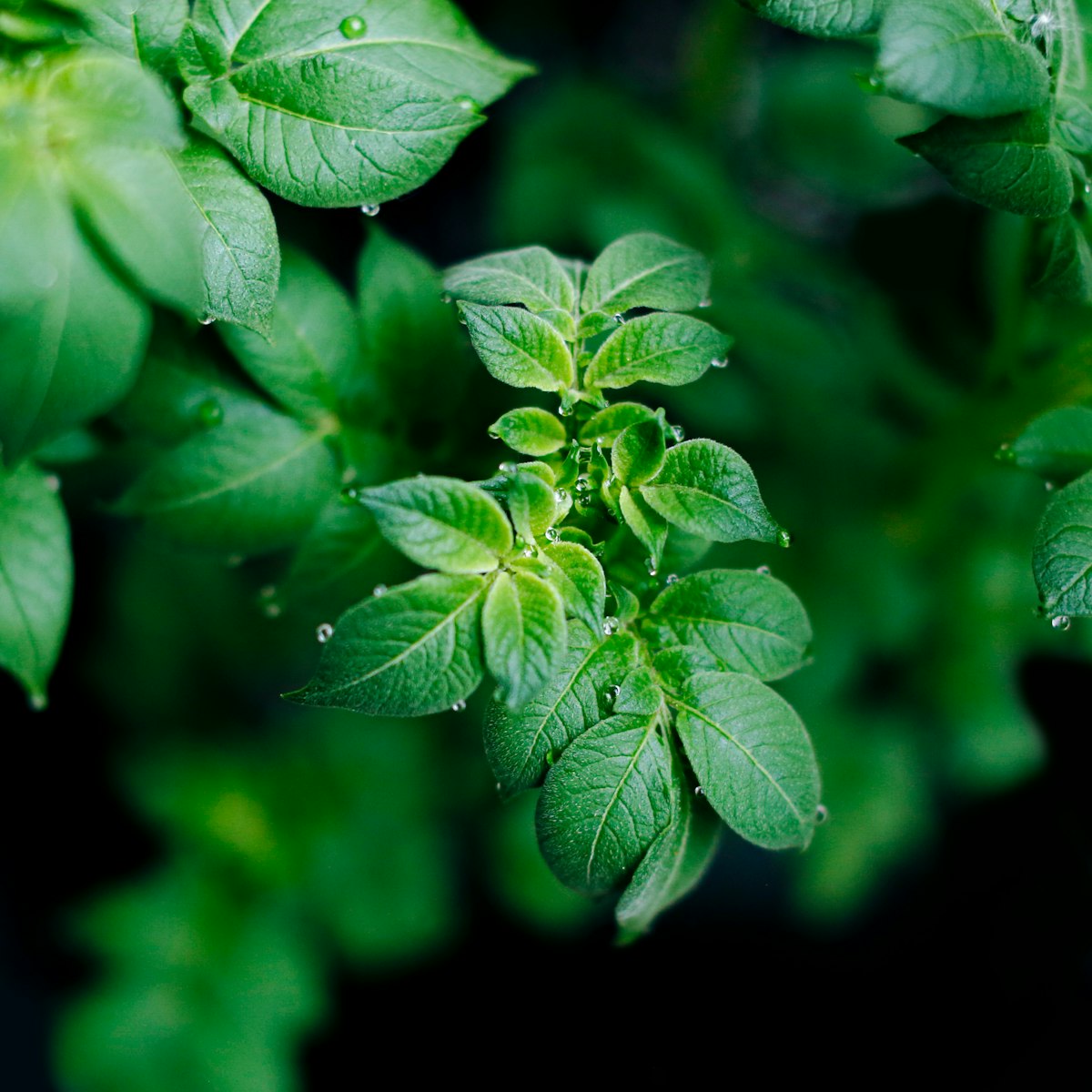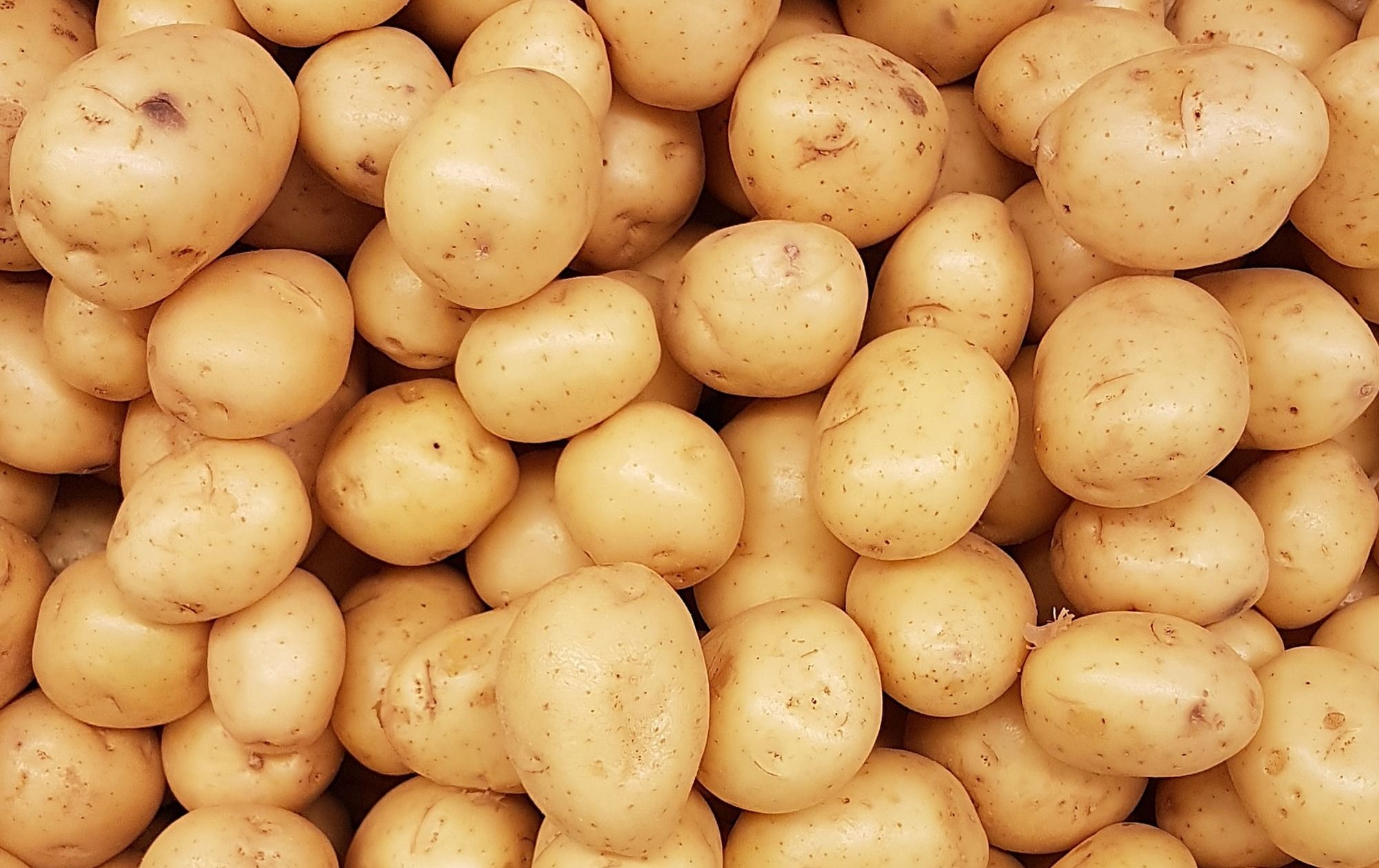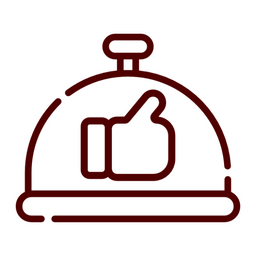How to Grow Potatoes
Growing potatoes can be a rewarding and satisfying endeavor in your garden. With proper care and attention, you can grow your delicious and versatile crop throughout the year.

Table of Contents
Potatoes are a cool-weather crop, making them suitable for planting in different seasons depending on your climate.
To start growing potatoes, choose the right time to plant based on your location.
In warmer climates, where the ground doesn't freeze in winter, you can plant potatoes in the fall.
For cooler climates, where the ground does freeze, it's best to plant your potatoes two weeks after the last frost.
When planting, ensure your potatoes have adequate space and the right soil conditions to thrive.
About Potato Plant
Potatoes (Solanum tuberosum) are cool-weather vegetables in different sizes and colors, making them versatile and delicious.
They can be grown in various climates, with bigger crops typically found in northern regions or as a winter crop in warmer areas.
Several popular potato varieties are available, like the French fingerling, russet, white potatoes, and the Yukon gold.
Each variety offers distinct flavors, sizes, and uses in the kitchen, giving you plenty of options when growing them in your garden.

Growing Potatoes
Choose the right time and location for planting potatoes.
In cooler climates where the ground freezes during winter, plant seed potatoes two weeks after the last frost in spring, while in warm climates, they can be planted in fall and grown over the winter.
Prepare the ground by digging shallow trenches about 6 inches deep, with a spacing of 12-15 inches apart for each seed potato.
Place the seed potatoes in the trenches, eyes facing up, and cover them with soil.
Ensure the planting site has plenty of sunlight and slightly acidic soil (pH of 5.0 to 7.0). Keep the area weed-free, and consider applying a layer of mulch to maintain moisture and suppress weeds.
Alternatively, you can plant potatoes in grow bags, which offer a versatile and space-saving option.

Caring for Potato Plant
Sun and Temperature
Potatoes thrive in full sun and moderate temperatures, between 60°F and 70°F.
Ensure your plants receive at least 6 hours of sunlight daily to promote healthy growth.
Water and Humidity
Water potatoes consistently, moistening the soil 8-10 inches below the surface.
Use deep watering techniques, taking care not to over-water as they can tolerate some periods of dry weather.
Soil
Choose well-drained, loose soil with a pH of 5.0 to 7.0 for optimal growth.
Mix organic matter like compost to improve soil structure and provide essential nutrients.
Fertilizer
Fertilize your potatoes with a balanced nitrogen, phosphorus, and potassium blend.
Apply an additional side-dressing of compost or aged manure midway through the growing season to provide extra nutrients.
Repotting
When growing potatoes in containers, use potting soil with proper drainage and ensure the containers have drainage holes.
Transplant sprouting potatoes into larger pots as they grow, ensuring they have enough space to thrive.
Pruning and Propagation
Remove any sprouts (or chits) that develop on stored potatoes before planting them.
Monitor your potato plants for signs of disease or pests and prune affected leaves or stems to prevent further spread.
Troubleshooting Plant Problems
Growing Problems
When you notice small tubers or yellowing leaves, it could indicate a deficiency in nutrients or water supply.
Ensuring adequate watering and fertilization can improve tuber size and leaf color.
Frost damage can injure potato plants, so protect them by hilling soil around the base.
Avoid harvesting immature potatoes in the fall, as their skins are not fully mature, making them susceptible to diseases, rot, and bruising.
If you see green potatoes, it's due to exposure to light. Hilling soil around the plants can prevent this issue.
Pests and Diseases
Pests, such as Colorado potato beetles and their larvae and aphids, can damage potato plants.
Handpicking these pests and using insecticides can help prevent damage.
Be attentive to diseases, like scabs, by selecting resistant varieties, maintaining soil pH levels, and practicing crop rotation.
In the case of holes in the leaves, this might be the work of pests feeding on the plants.
Control methods include biological measures, like beneficial insects, or chemical treatments when necessary.
For starchy or waxy potatoes, select cultivars resistant to diseases and pests.
Companion Planting
Companion planting is a strategy for growing different plants to promote healthy growth.
For instance, planting beans or peas near potatoes helps repel pests like the Colorado potato beetle.
On the other hand, avoid planting tomatoes or peppers close to potatoes as they share similar pests and diseases, increasing vulnerability.
Conclusion
Selecting the appropriate potato variety for your home garden that matches your preferred cooking methods, such as russets for mashing or red potatoes for salads, is essential.
Choose seed potatoes with healthy eyes, and plant two to three inches deep in well-draining soil with adequate sunlight.
During the growth process, ensure proper watering and feeding based on the variety's requirements.
Some potatoes can even be grown over the winter in warm climates.
When it's time to harvest, you'll have a variety of fresh potatoes to enjoy for months to come.
Curing and proper storage methods will prolong their freshness, and freezing can help ensure you have delicious, homegrown vegetables year-round.
Frequently Asked Questions
What is the ideal spacing for planting potatoes?
When planting potatoes, it's important to space them about 12 inches apart in rows, with rows 2 to 3 feet apart.
This spacing gives each plant enough room to grow and ensures optimal yield.
How deep should potato seedlings be planted?
Plant potato seedlings about 3 to 4 inches deep in the soil. This depth gives the seedlings room for strong root development and tuber growth.
Which plants make good companions for potatoes?
Some good companion plants for potatoes include beans, peas, and cabbage family plants.
These companions offer benefits such as nitrogen-fixing, pest deterrence, and improved soil health.
When is the best time to harvest potatoes?
The ideal time to harvest potatoes is when the foliage begins to yellow and die back.
For early potato varieties, this typically occurs around 10 to 12 weeks after planting; for maincrop potatoes, it's typically 15 to 20 weeks after planting.
Can store-bought potatoes be used as seed potatoes?
While it's possible to use store-bought potatoes as seed potatoes, it's not recommended.
Store-bought potatoes may carry diseases or be treated with chemicals to prevent sprouting, inhibiting growth, and negatively affecting your crop.
How long does it take for potatoes to grow from planting to harvest?
The time it takes for potatoes to grow from planting to harvest varies by variety.
Early potatoes take around 70 to 90 days, while maincrop potatoes require 100 to 150 days to mature fully.



